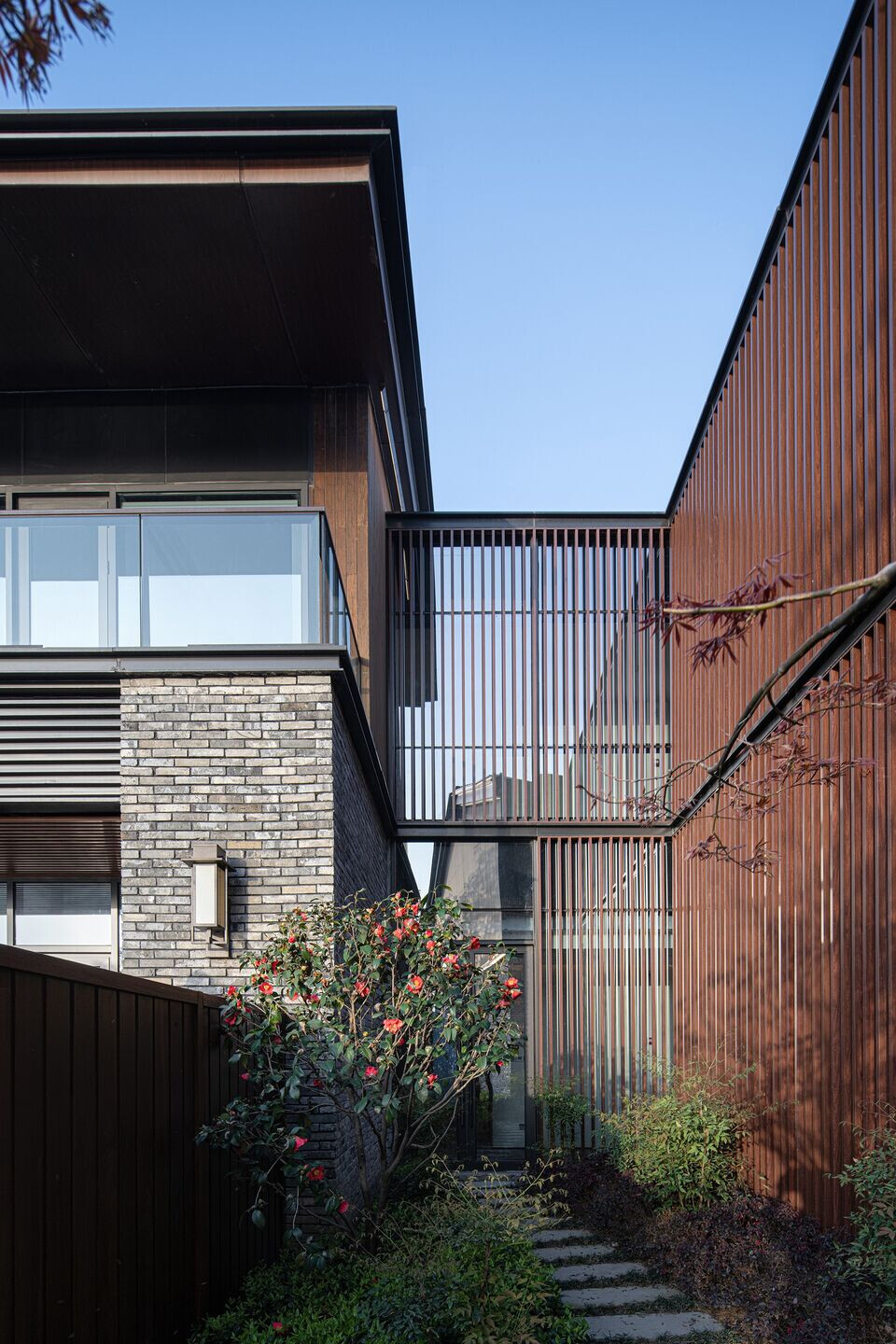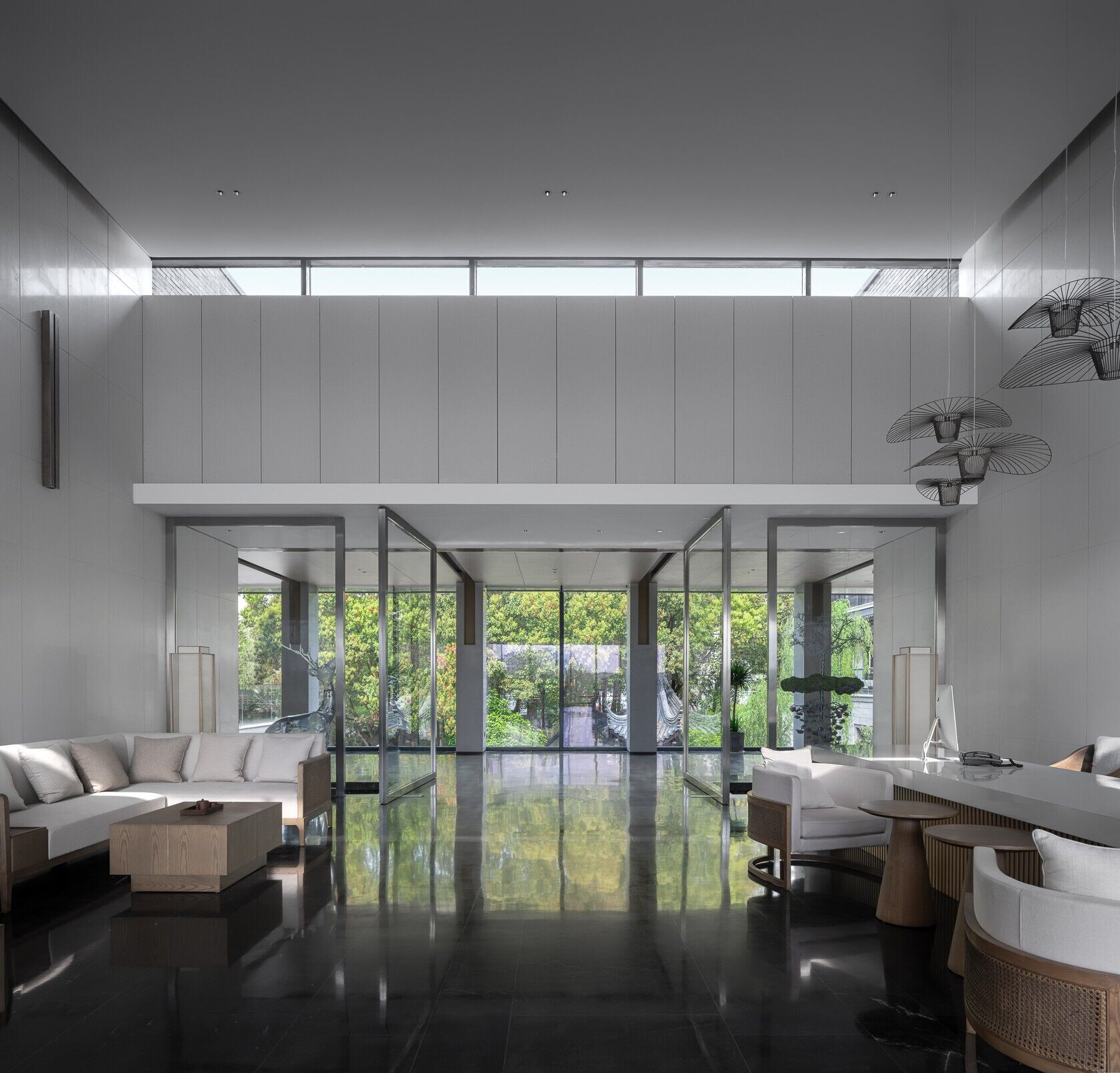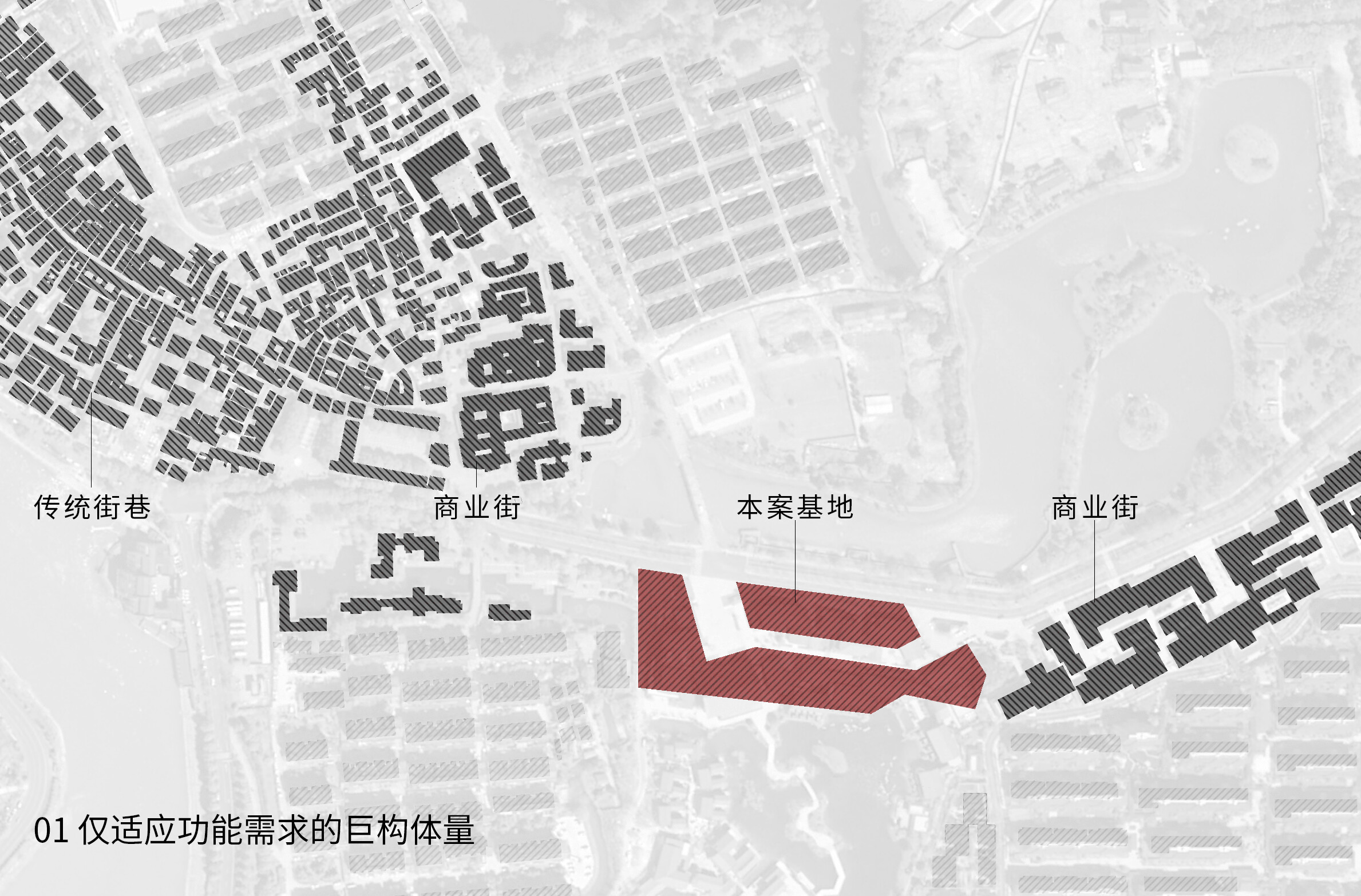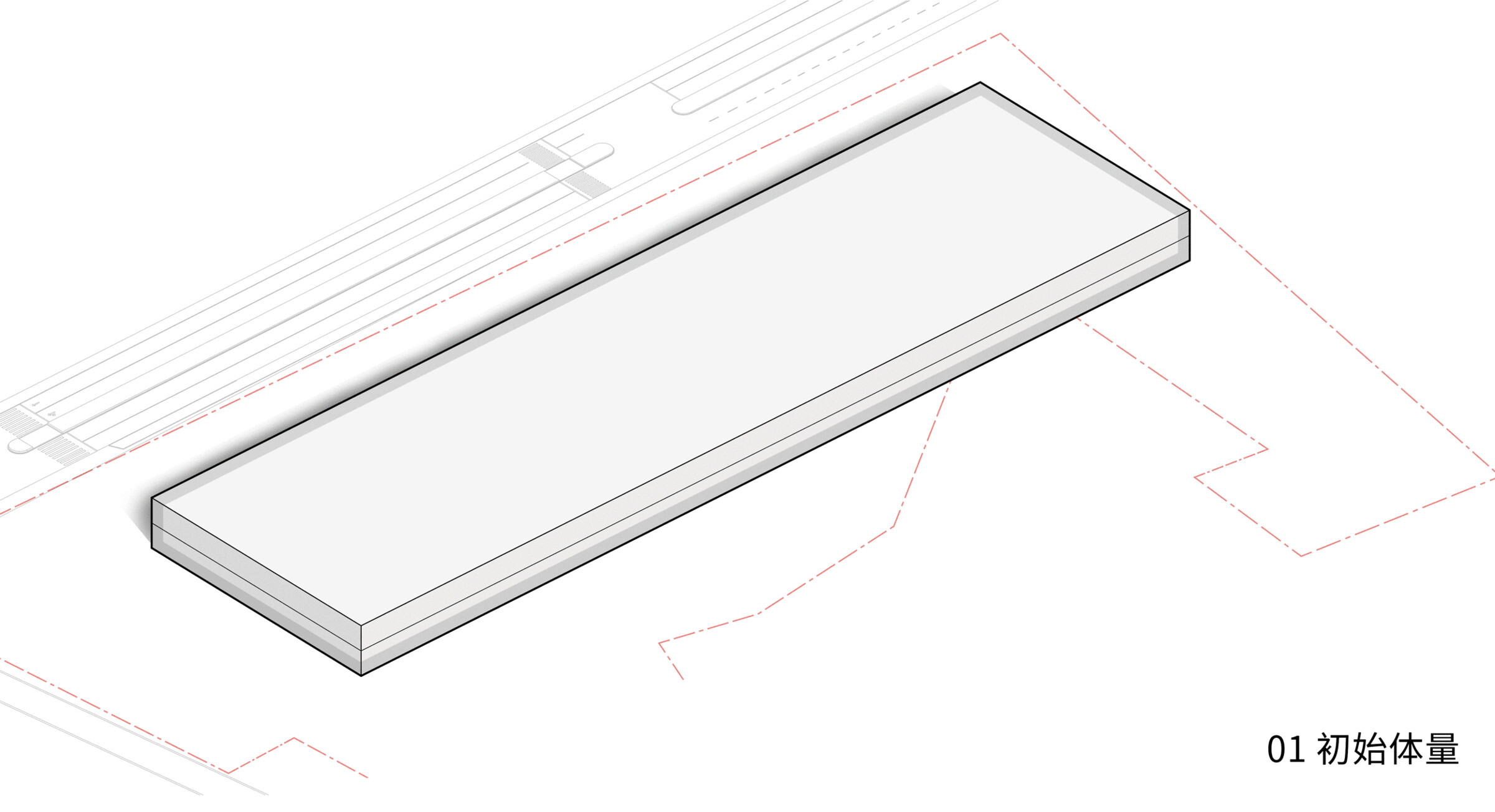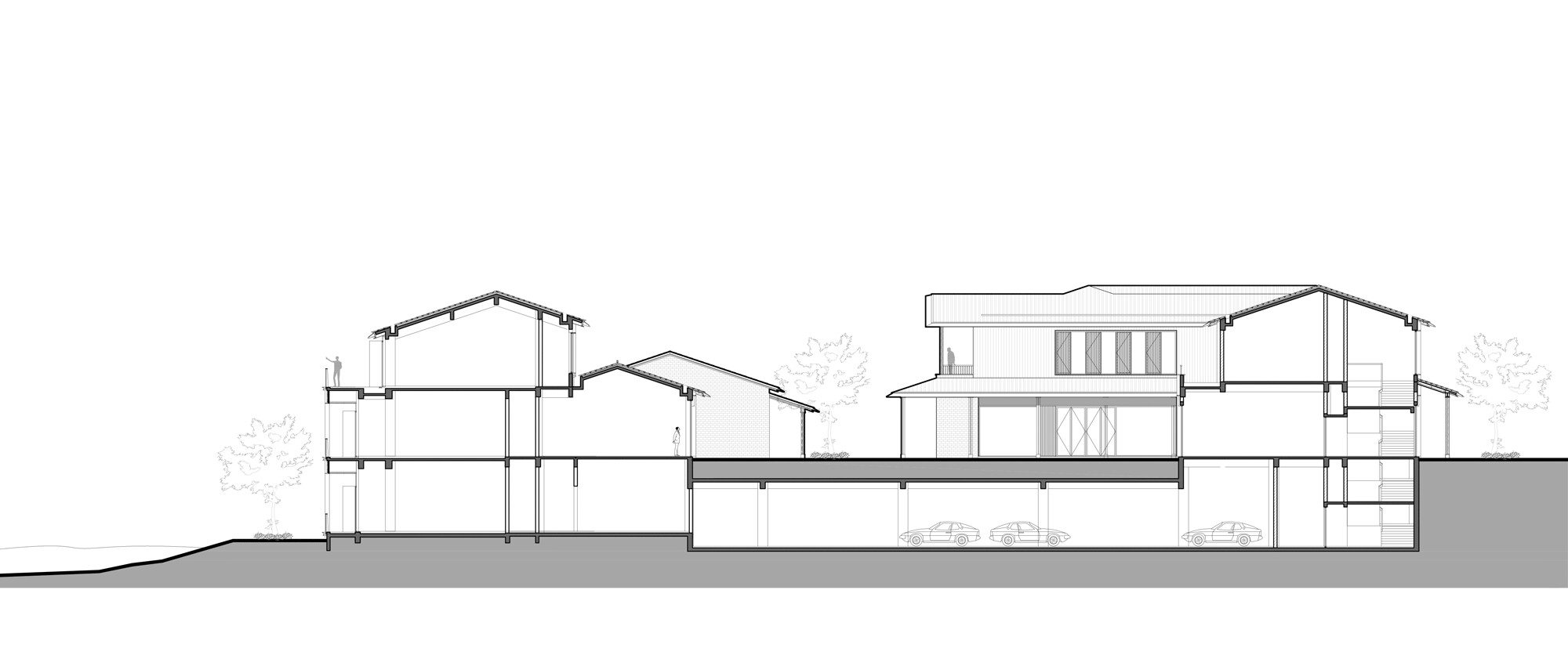"When a new building is involved in the old city, we hope that it can not only connect and stitch the texture of the old city, but also renew the form of the old city. This is an open, low-ensity block, and it is also a stitching of the fractured texture of the old city and a continuation of its form and scale, building a complete, orderly and vibrant new pattern for the old city.” ——Meng Fanhao

Gaochun is the back garden and south gate of Nanjing, the ancient capital of Jinling and an international slow city. In the western polder area, there are two large lakes, Gucheng Lake and Shijiu Lake, surrounded by dense water networks; the eastern hills are surrounded by the ridges of Maoshan, and green hills are continuous. In terms of culture, the old town of Gaochun has a rich heritage, and it still retains the oldest Wu language and many old alleys in ancient towns with a thousand years of age. Among them, the “Gaochun Old Street” is the most well-preserved ancient street of the Ming and Qing Dynasties in East China, which has a history of more than 900 years and is the best-preserved ancient building complex in Jiangsu Province.

In recent years, under the influence of the international “Slow City Movement”, Gaochun advocates the steady development of tourism and leisure industries in the protection of regional characteristics, natural ecology and traditional culture. Adjacent to Gaochun Old Street and next to Gucheng Lake, it is a parent-child vacation cultural tourism complex – Nanjing Gucheng Bay Scenic Area which is invested and constructed by Yada Group, operated by CYTS, and designed by line+. It is another beautiful life park after Wuzhen and Gubei Water Town. As the commercial supporting facilities and urban interface of the scenic spot, New Century Resort Gaochun Nanjing and Visitor Center is located outside the scenic spot, and is a transition space between the new and old blocks.
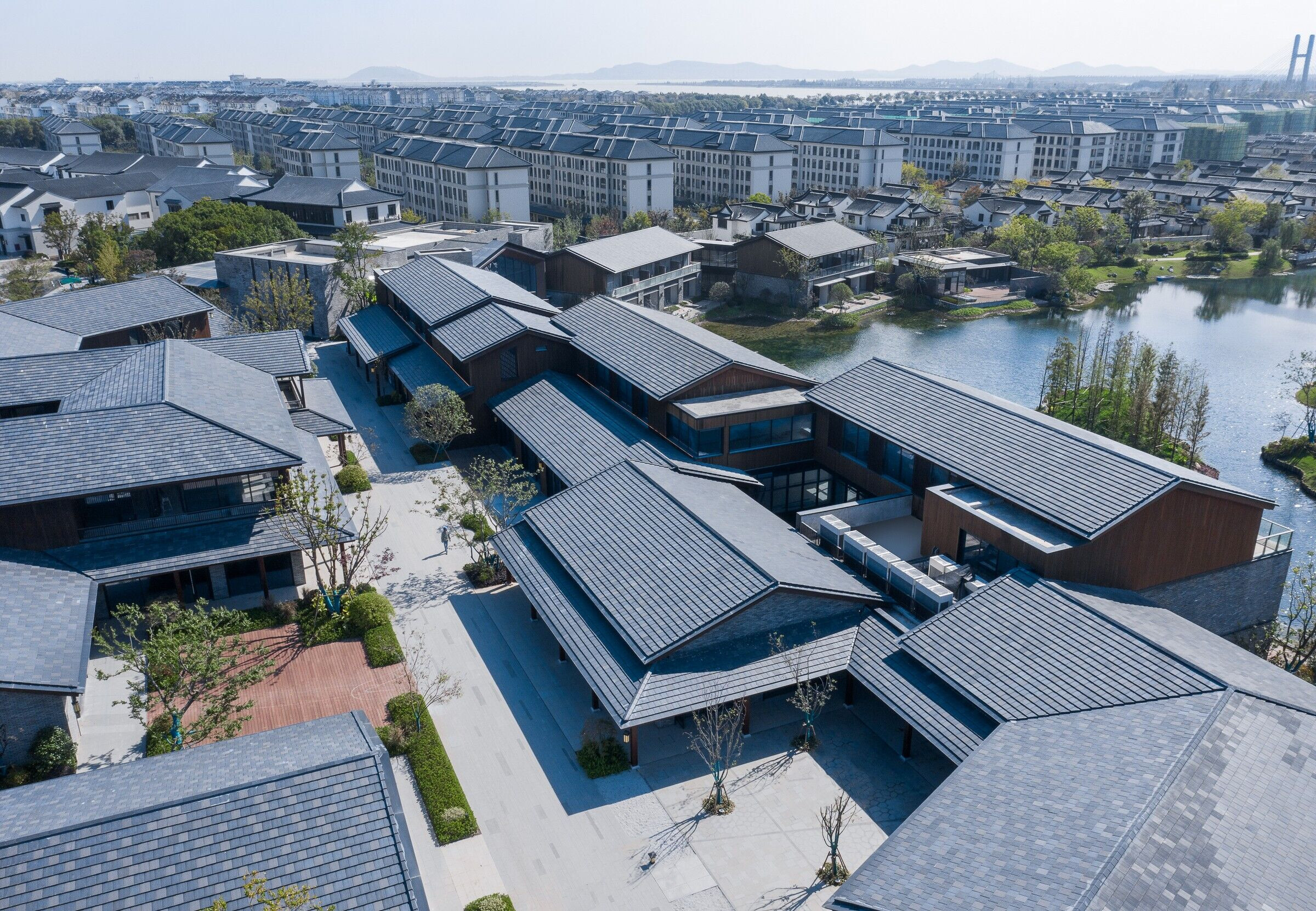
In the context of new urbanization, the contradiction between the context of the old city and the development of modern city appears to be particularly prominent – the traditional Gaochun Old Street and the expanded commercial area are on the west side of the site, and the modern urban community and supporting commercial streets are on the east side. Therefore, we hope that when new buildings intervene, they can not only connect and stitch the texture of the old city, but also continue and renew the form of the old city.
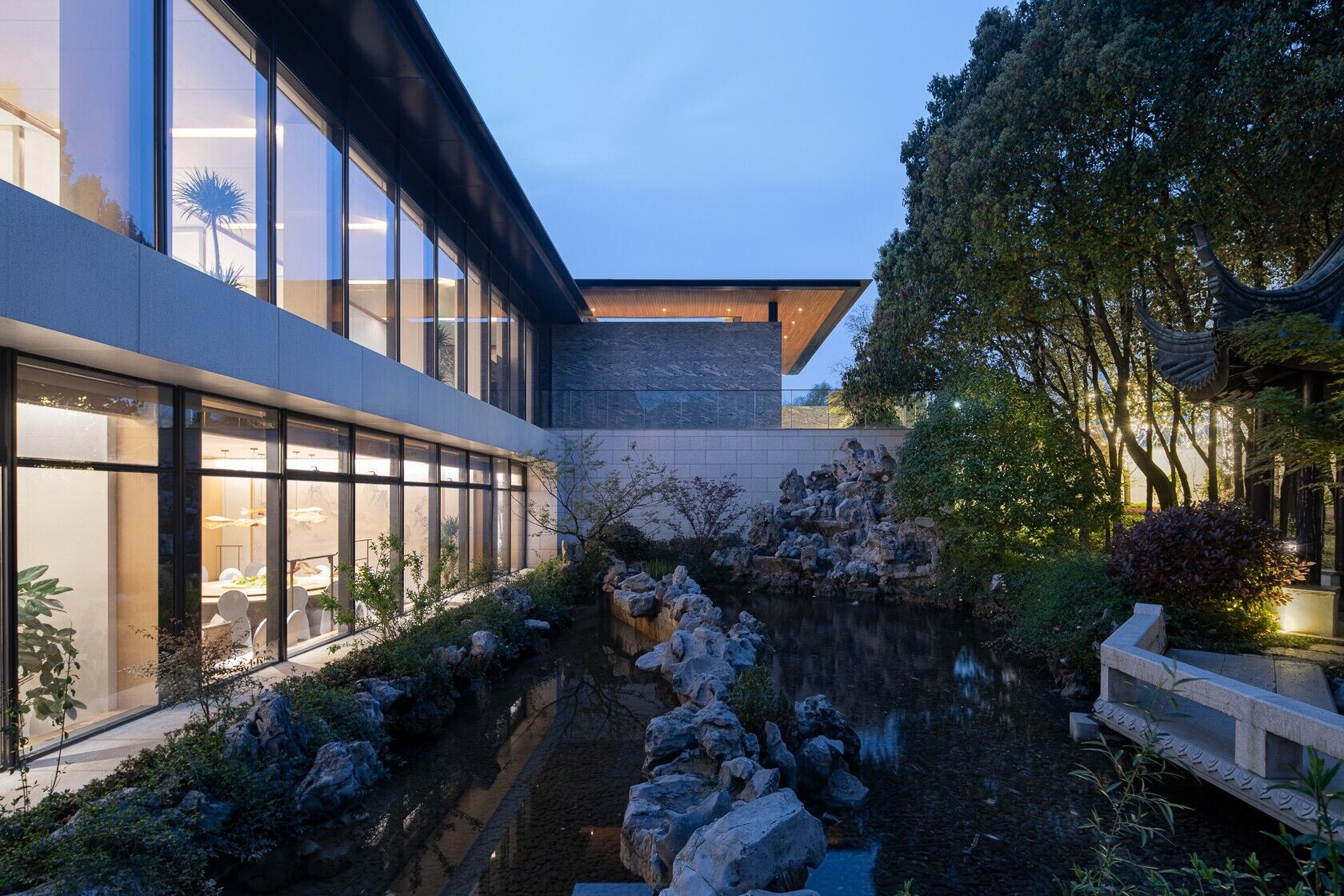
01 Different and Appropriate Texture Scales
Before the design, we first analyzed the texture, scale and spatial composition of the surrounding building groups, and attributed their influence to two aspects – traditional and modern. The influence of the traditional interface mainly refers to the Gaochun Old Street on the west side of the site, which is about 800 meters long and distributed in a spread-eagle shape. The buildings are mostly traditional houses with 1-2 floors, and the street-to-building aspect ratio is between 1:1 to 1:2, which appears cohesive, stable and not depressed, and the scale is pleasant.

The influence of the modern interface is mainly the expanded commercial blocks around the old street, including Hui-style antique houses and brick buildings imitating the style of those in the Republic of China. Most of the new buildings are 2-3 floors, with rich and open spatial levels, and the building scale is larger than that of traditional dwellings. The east side of the site is adjacent to the new community group, which is a common north-south row texture. The commercial blocks supporting the community are dominated by new Chinese buildings with black tiles and white walls.
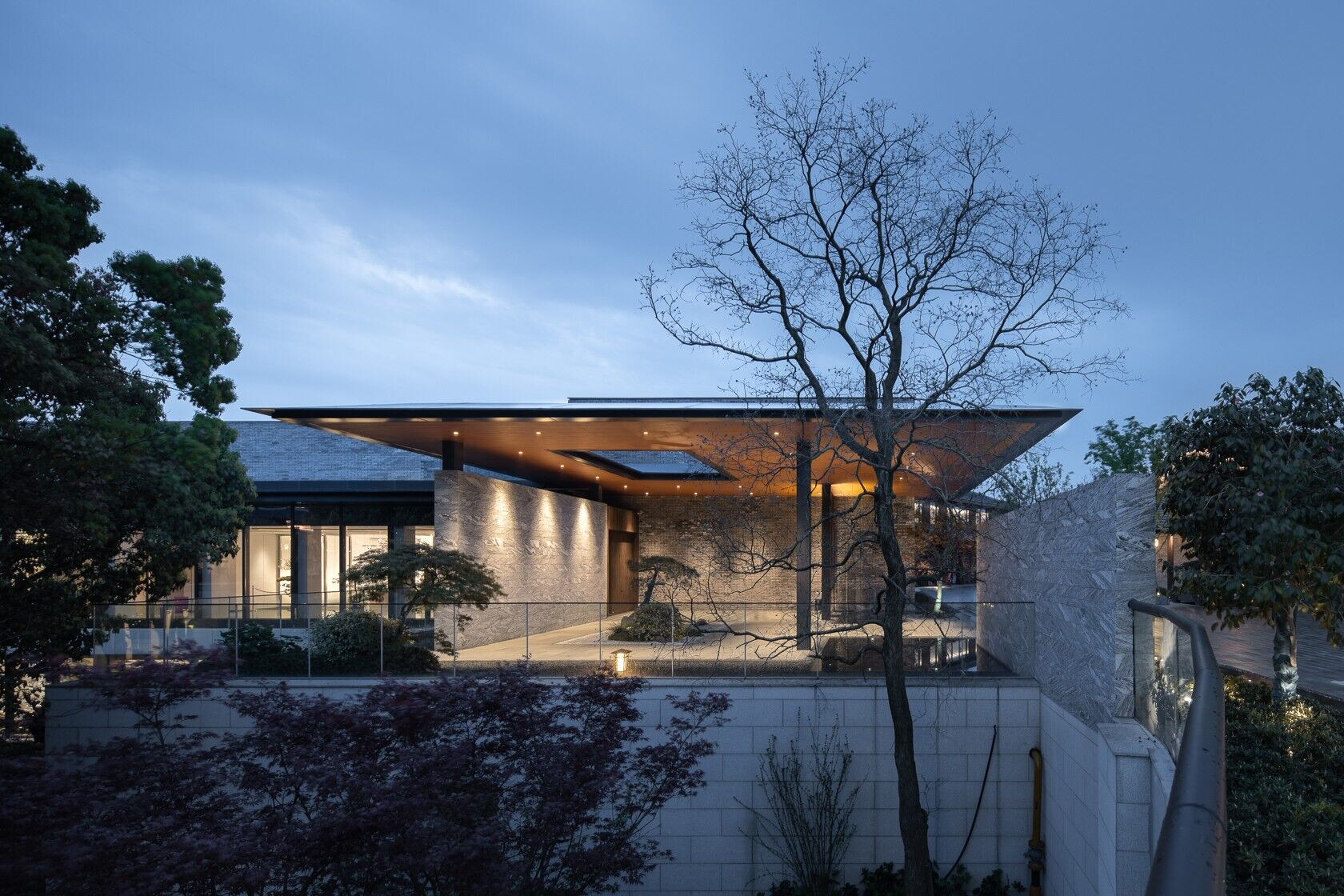
Scales are based on people’s measurement and perception of buildings or the environment, and present differently due to environmental references, human scales, building materials, etc. It is often the most prominent contradiction between “tradition” and “modern”, and it is precisely the essence of the design. From the perspective of typology, we analyzed and summarized the scales of the surrounding groups, and proposed two key points for the design: one is to coordinate with traditional streets and lanes on the scale of texture and interface, and the other is to match the needs of contemporary tourists on the internal spatial scale.
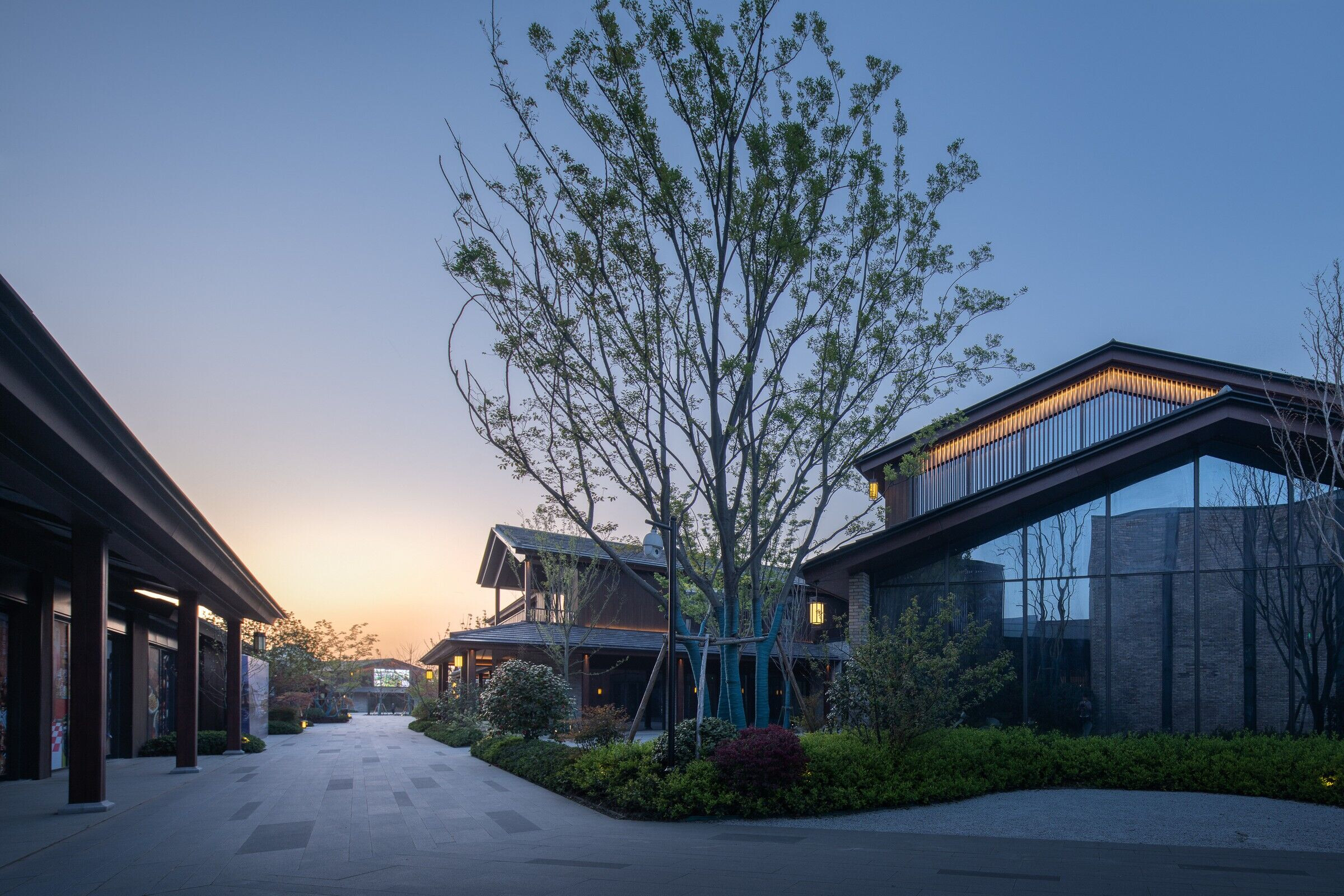
Taking into account that the resort and visitor center also have certain urban attributes when they undertake functions such as scenic entrances and commercial facilities, the design makes the space as open and interactive as possible for the recreation of surrounding residents.
Therefore, we express its internal and external properties as short and low-density street space. Its scale is between the traditional and the modern, which can not only echo the old street, but also form a coherent and harmonious urban interface, facing the city with an open attitude, born for the city.In the new streets, the ratio of street width to building height is between 1:1 to 2:1, which can still produce a cohesive and centripetal space, with a moderate sense of scale and not discrete, making it easy to see the building facade and the overall relationship.

02 Appropriate Form Scale
The form scale of the new buildings incorporates the characteristics of traditional buildings, and appropriately performs modern abstract interpretation, so that it can better serve the functions of the new buildings, and can balance in terms of forms the style alienation between the old buildings and the new Chinese buildings.
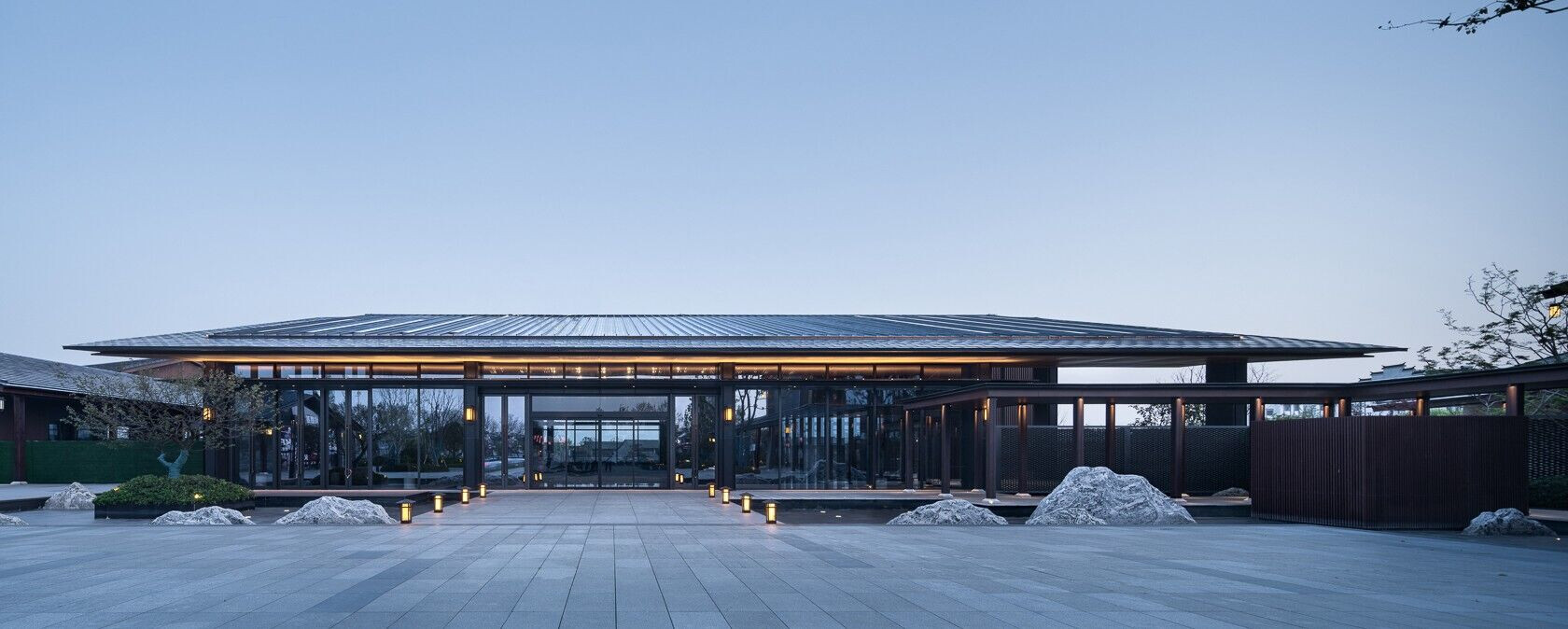
Visitor Center
The visitor center plays the role of the main entrance of the scenic spot and serves multiple streams of people at the same time. It is the largest single unit in the group and is set on the west side of the streets and faces the entrance plaza. As an important space node connecting the old and new streets, the design of it is inspired by the Jiangnan architectural elements – sloping roofs, eaves gallery, and doors.
The functions of the visitor center include ticket sales, check-in, streamline organization, and commercial functions such as catering and reception, souvenir sales, we placed a rectangular volume that can meet all needs under the large-scale sloping roof, and consciously guide visitors through architectural elements.
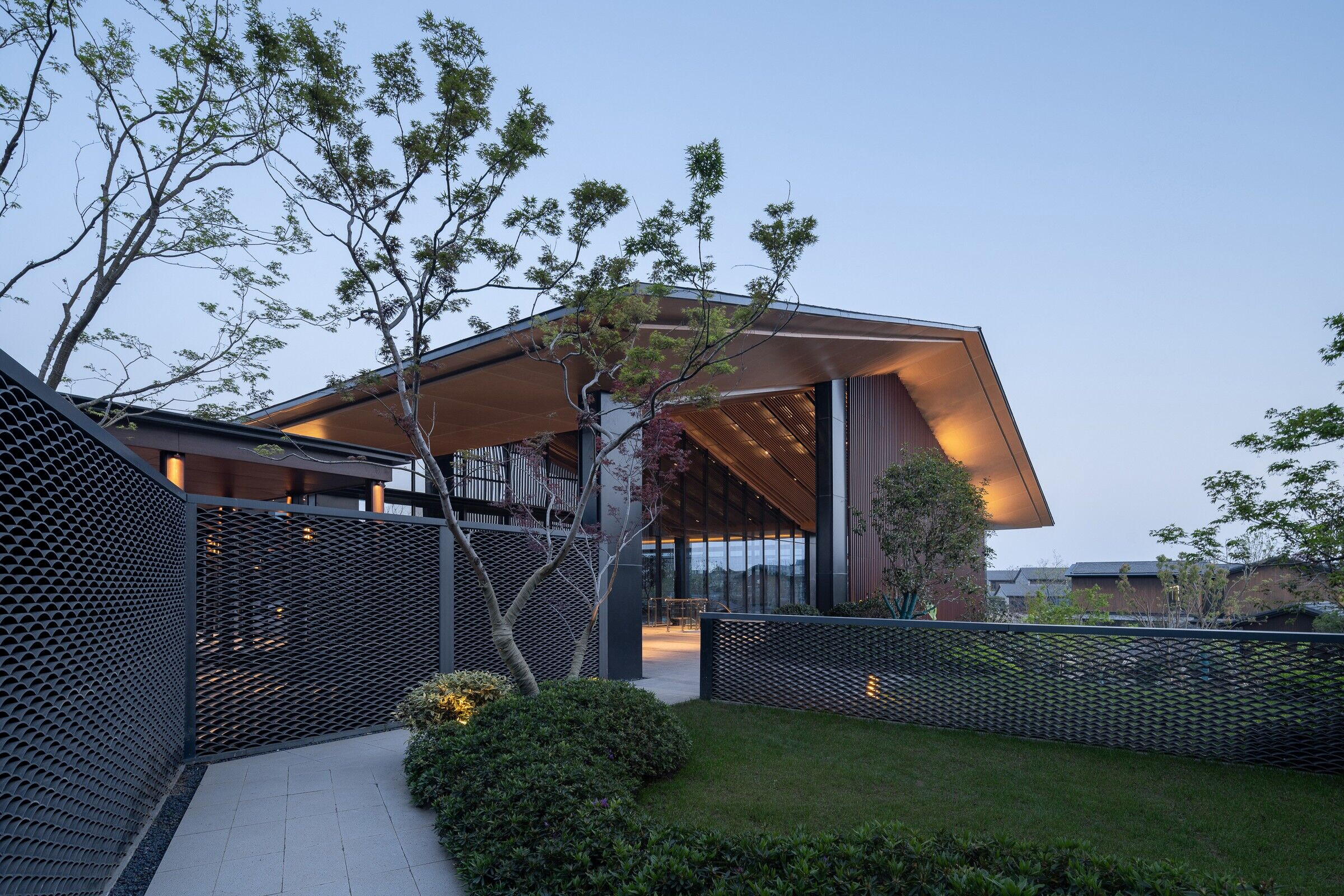
The first floor is the thick foundation made of stone, while the second floor is as transparent and open as possible. The continuous and fully openable glass doors are similar to the design of the partition windows of Jiangnan buildings. The water surface extending outward on the second floor not only forms a viewing platform, but also forms a colonnade for the business area on the ground floor, providing a gray space for staying and resting.
On the west side, we placed a giant partition board woven with wood-like metal wires to form an interesting flexible interface between the transparent and the impermeable, which, together with the gray space under the large-scale roof, form a traffic space and activity space similar to a “corridor”.

New Century Resort Gaochun Nanjing
The entrance of the resort is hidden on the east side of the streets and lanes, and the space is transformed and connected with “pavilions”. This kind of layout ensures the unique immersive resort environment, interacts with the city as little as possible, and conveys all the best natural scenery around the water system to the guest room area.
The resort contains a total of 55 guest rooms, 3 specialty restaurants, 3 meeting rooms, 2 gyms, as well as a bar, book bar, children’s activity room and other facilities. According to the functions, the volume is divided into public area, guest room area, and logistics area.

The public area has a larger scale in terms of functional requirements, and is arranged backwards in the form of a rectangular volume; the guest room area maintains a similar proportion and scale to the residential settlements, which mainly consists of short individual buildings that are arranged linearly along the “water”.
Viewed vertically, the design cleverly utilizes the topography characteristics, sinking the restaurant on the first floor to form a courtyard, and the lobby on the second floor is connected to the main entrance. The sunken courtyard is appropriately filled with the landscape imagery of Jiangnan gardens such as pavilions, mountains and rocks, and provides the necessary lighting, ventilation and landscape environment for the restaurant.
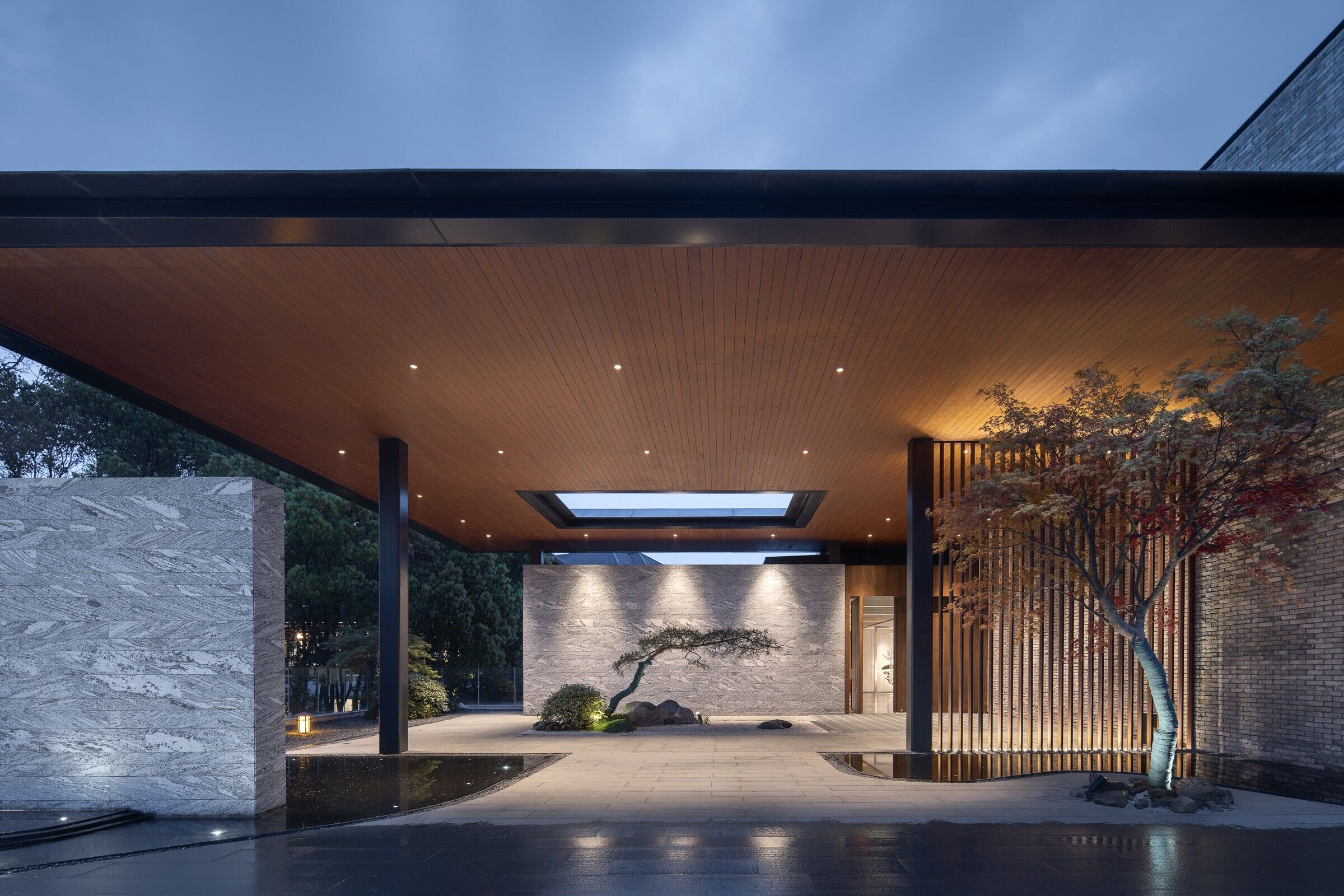
The lobby is an important node of the resort. It is located in the center of the landscape axis. The slightly elevated topography makes the landscape view wider, and naturally constitutes the landscape axis of “lobby-landscape-visual focus (arch bridge and water pavilion on the lake)”.
From a horizontal perspective, the individual guest rooms are staggered to a certain extent and connected by glass bridges. The purpose is to strive for a landscape view for all guest rooms and to ensure accessibility and privacy.
At the same time, the interspersed and series of masses also create activity spaces such as patio courtyards and open-air platforms.

03. Suitable Form and Material
The design strategy of “appropriate texture” is to make the new buildings and the local buildings form an echoing and integrated temperament and context. At the entrance of the resort, a panel embedded in a gray brick wall defines a pure and neat directional space. The abstract formal language can not only express the ancient charm and modern sense, but also realize the freedom of space.
The blue bricks of the masonry wall are all from the site, and the reused old bricks are combined with the glass openings to form a virtual and real facade, which expresses the heavy rectangular volume while creating a low-key and stable image. Compared with traditional sloping roofs, flat roofs can better meet the needs of the rectangular public areas in terms of form performance and functional scale.
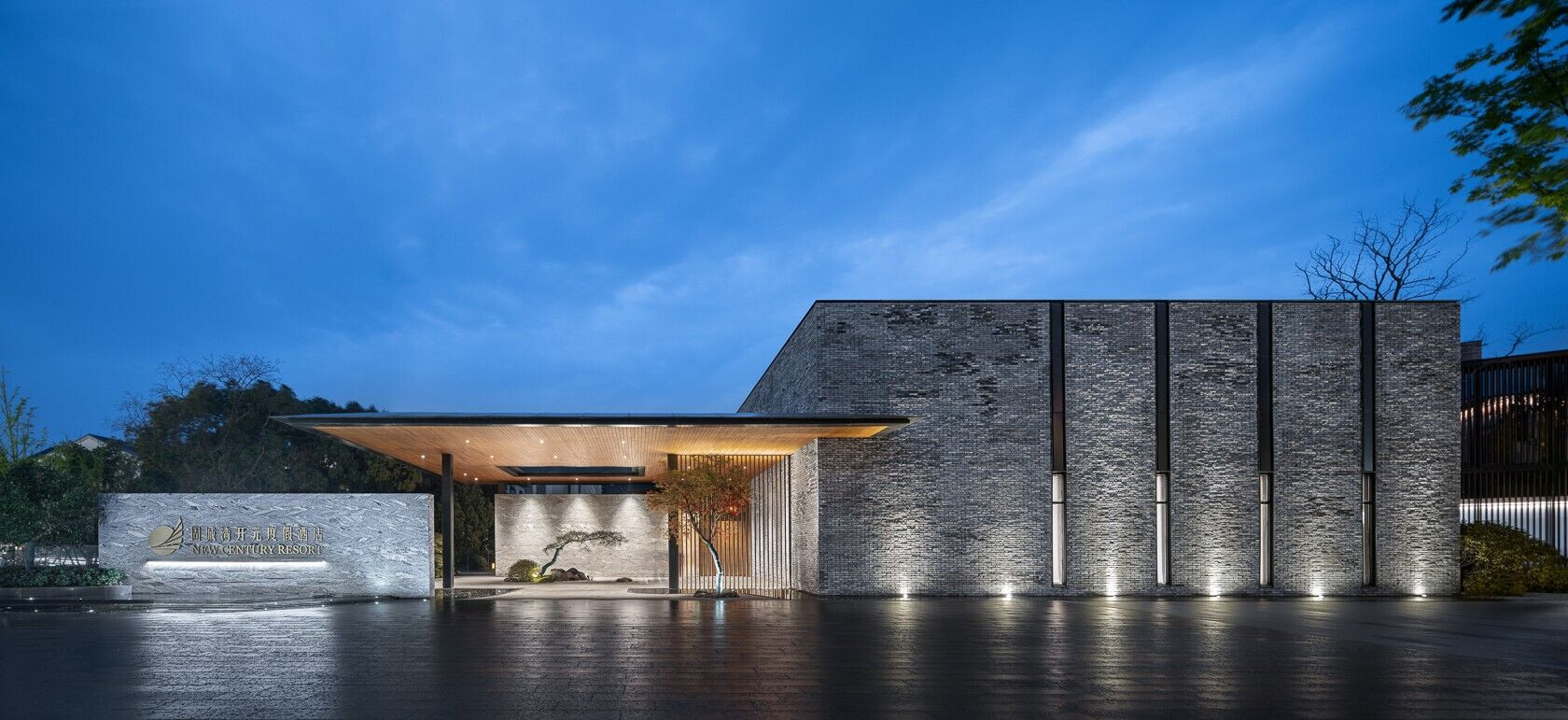
A sloping roof-like glass façade is ingeniously embedded on the south side, which not only provides an unobstructed view for the restaurant and lobby, but also maintains a unified form along the lake interface.
The individual guest rooms have three floors. The first and second floors inherit the “brick” elements of traditional residential buildings, and are dominated by traditional blue bricks. The third floor is set back to form a family suite with a terrace, which relieves the oppressing sensation of the three-story building on the landscape view to a certain extent. Bamboo planks are used as the main expression material, which are connected and buffered with the sloping roof surface.
Wooden grilles and black metal meshes run through the inside and outside as “hidden” clues, translating and incorporating the translucent attributes of door leaves of traditional architecture into the guest room buildings, increasing the spatial dimension and interestingness.

Epilogue
“To move from the more traditional city to a more imaginative one requires thousands of changes in mindset, creating the conditions for people to become agents of change. A creative milieu is a place that contains the necessary requirements in terms of ‘hard’ and ‘soft’ infrastructure to generate a flow of ideas and inventions.”
———— Charles Landry
The Creative City: A Toolkit for Urban Innovators
This is an open, low-density block, without the heaviness of traditional buildings, but relaxed, cozy and full of the sense of design. Glass, metal, brick, wood, light and modern materials convey the traditional charm, and coexist harmoniously with the surrounding old buildings in contrast. This is also a repair and stitching of the broken texture of the old city and a continuation of the morphological scale, building a complete, continuous and vibrant new pattern for the old city.
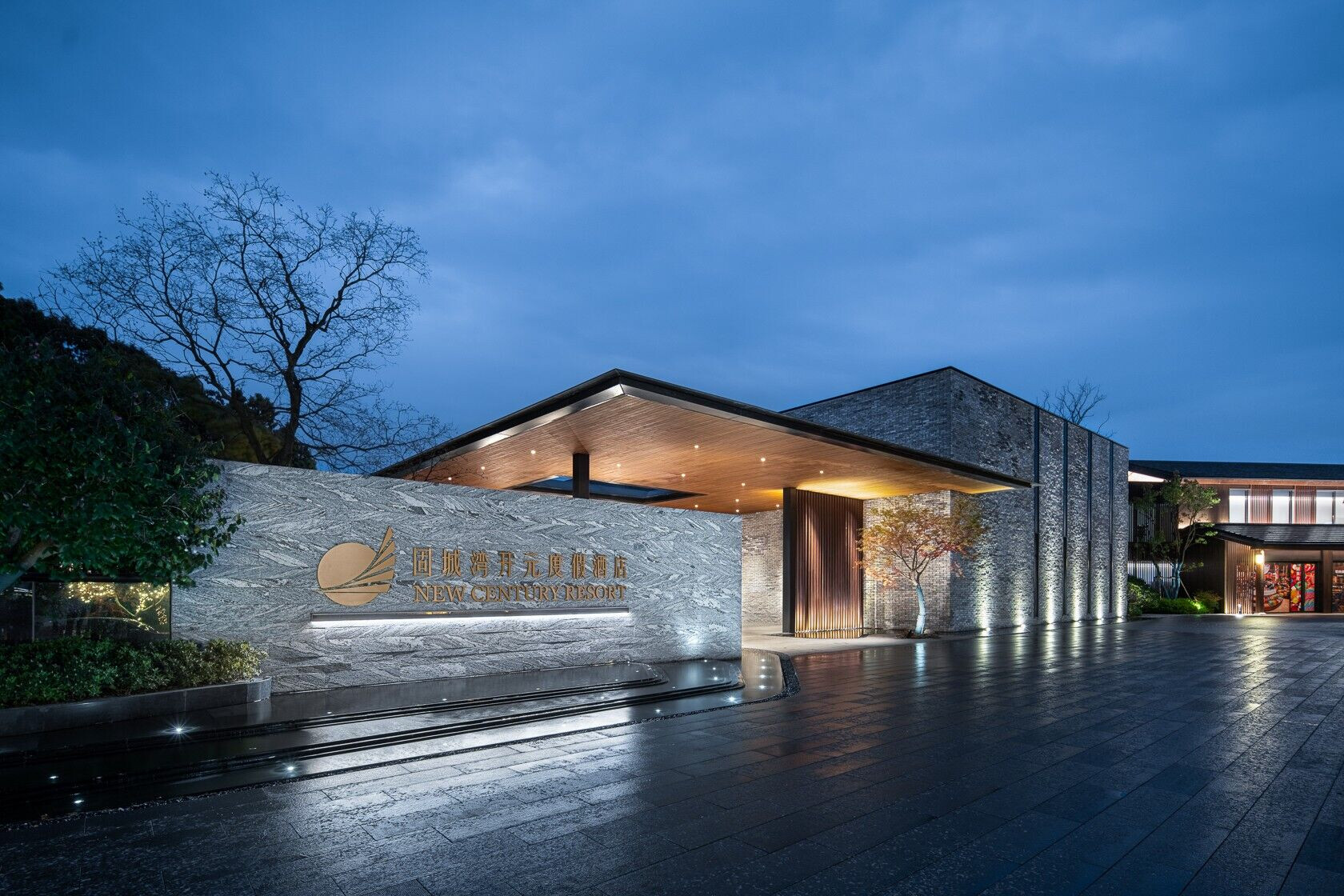
New Century Resort Gaochun Nanjing is now open to the public. With its hidden sense of privacy and meticulous delicacy, it welcomes and accommodates tourists from all over the world, and provides a holiday experience integrating traditional culture, natural landscape, and modern comfort. What’s more, the visitor center and commercial street have also become the urban living rooms of surrounding residents, and the rich urban scene has been and will continue to be integrated into the new life of the old city.
